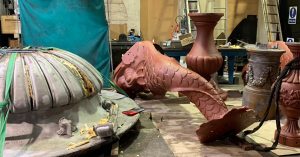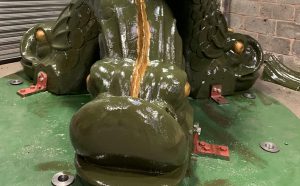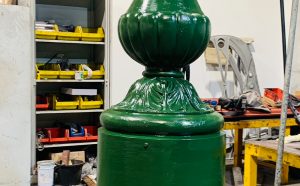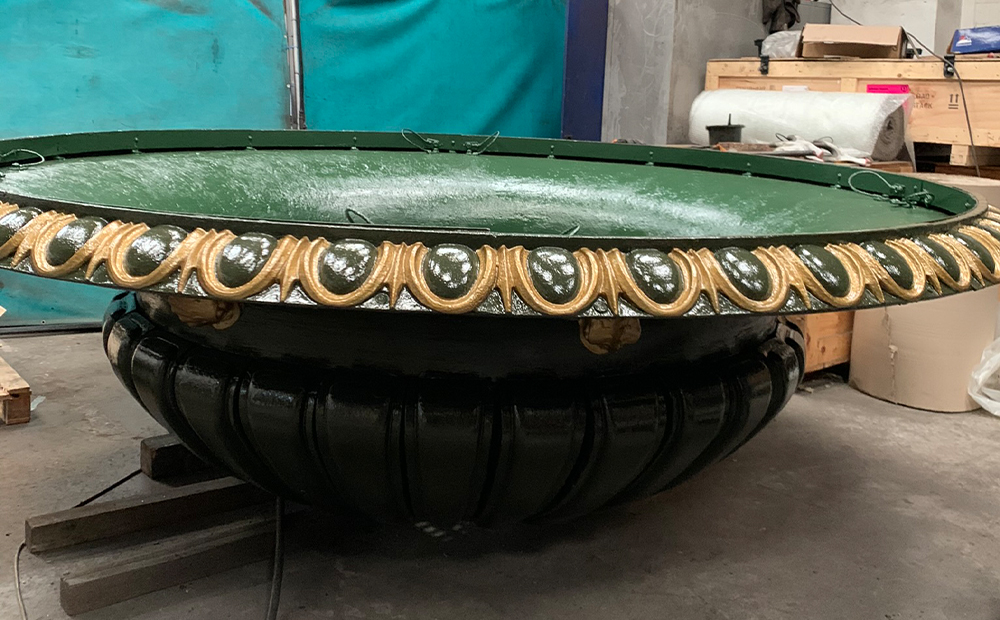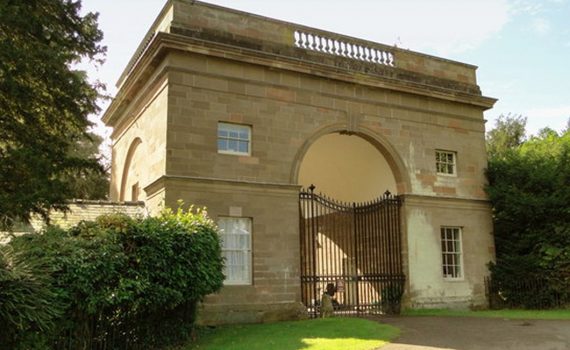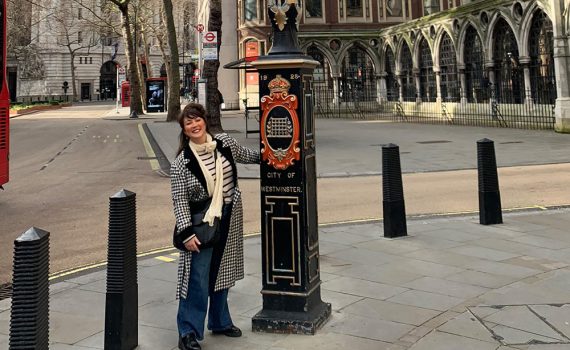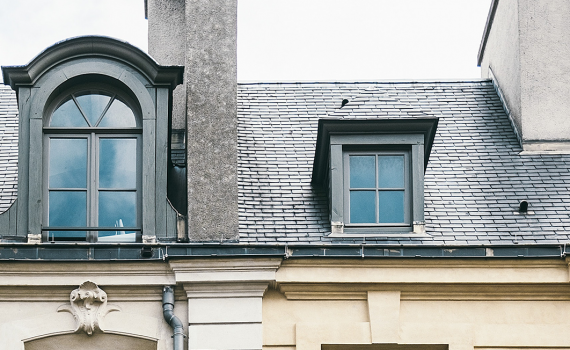Dating back to 1846, the Victoria Fountain has been an important part of Brighton’s heritage for 178 years.
Victoria Fountain was commissioned by Cordy Burrows, a local surgeon who was later knighted. In 1837, the local council refused to build a commemorative fountain to celebrate the Queens’ accession to throne, so Burrows drove a project to build a fountain for the Queens’ birthday. He generated private funding and drafted Amon Wilds to design and build the structure. Amon had designed much of the finest local Regency architecture and chose an elaborate and imposing structure some 32 feet high, with two large cast iron pools and decorated with huge, intertwined dolphins. The fountain was capable of shooting water 20-30 feet into the air and was unveiled on the Queens’ 27th birthday in 1846.
The age of the fountain has produced a natural deterioration over time. The first major renovation was completed in 1995, ready for the visit by the Prince of Wales. But in 2022 a report highlighted ‘significant and complex structural problems and a deep sinkhole was discovered to the side of the fountain. The fountain was leaning to one side, and as safety concerns increased, a plan to restore the fountain began, and Brighton and Hove City Council contacted the Cast Iron Welding Services team…
The Logistics of the Restoration
The restoration project was a massive undertaking. The whole structure had to be transported to the Cast Iron Welding Services premises in Leicestershire, as our unique welding process couldn’t be performed on-site. Also, the client had highlighted concerns regarding the water flow, and from our initial visit, we were able to identify that the fountain wasn’t sitting on a level base, likely caused by ground movement over the years due to the weather. And it wasn’t a surprise to find corrosion present too, which would be a large contributor to the uneven flow of water. Due to the coastal location of the fountain, sulphur is present in the atmosphere, increasing the rate of corrosion significantly.
Fortunately, we have extensive experience in transporting unconventional large-scale landmarks and have overcome many obstacles over the years.
We outlined a clear plan with the relevant parties, such as the local council, traffic control and specialist equipment providers. Safe diversions were created to keep the public safe, while the removal and later installation took place.
Good communication during this part of the process helped the project enormously and kept everyone on the same page.
To remove the fountain, we used a mobile crane to carefully lift each section. The crane transferred each section to a registered wide-load vehicle and carefully transported it to Leicestershire.
Once the fountain was back at our facility, it was ready for a detailed inspection, and the groundworks to create a new level base could begin on site in Brighton.
Enhancing the Victoria Fountain’s Longevity
The initial plan was to dismantle, test and repair each section of the fountain and then piece it all back together.
Each section was coated in layers of historic leaded paint, which all had to be completely removed and disposed of, in line with the current safety guidelines, before the repair process could begin.
We needed to dismantle the petal-shaped sections that make up the bowl-like structure from the main body of the fountain. This was a tough task but completely necessary to repair the fountain correctly. The process uncovered problems created by previous restoration attempts, where unsuitable bonding materials had been used to repair leaks. These materials also had to be removed before the team could begin the welding repairs that would eventually restore the strength and structure of the sectional pieces.
The Victoria Fountain has been holding a large body of water for many years, and the methods and solutions to be used in the restoration process were discussed at this point. The outcome would prevent water escaping or settling in between layers of each cast iron section. The team also considered the protective paint solution most suited to the salty Brighton atmosphere, to prevent future corrosion.


